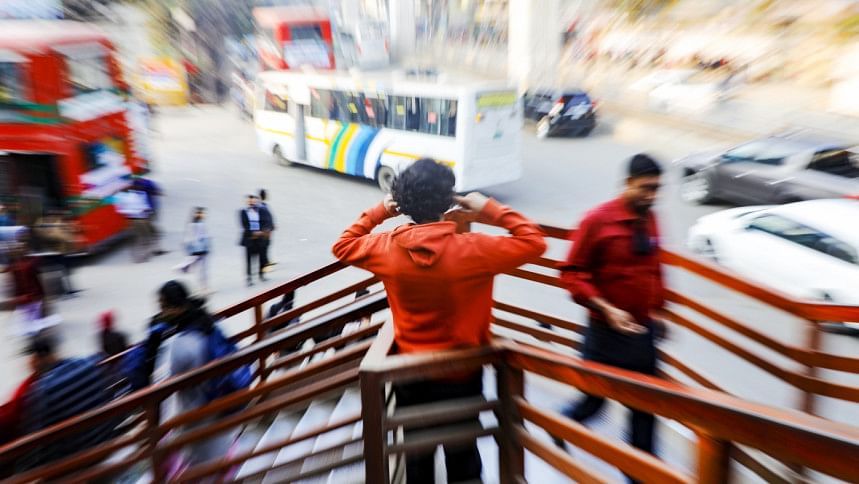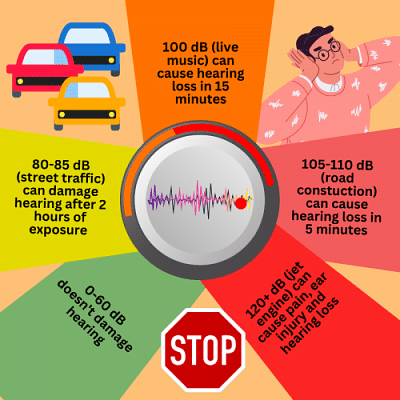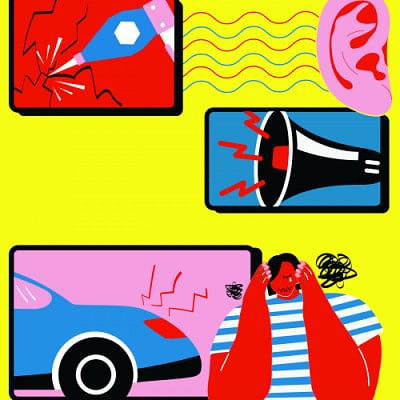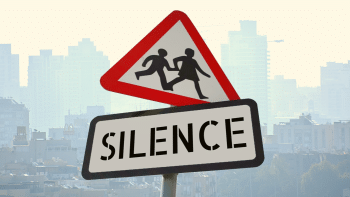The deafening reality of noise pollution

It was 2:30 AM and I was trying to concentrate on my Electronics lecture as I had my term final 2 days later. A congregation that had gathered beside my house had its loudspeaker pointed towards our apartment and blasted sound at a ridiculous volume. Neither could I concentrate on what I was reading, nor could I go to sleep. This went on for two days. I had to spend 52 hours without sleeping, days before my term final. My entire life halted and it was just me waiting for the noise to stop. I broke into tears on the 51st hour.
Such are the stories of almost every residential area in Bangladesh, which are plagued with deafening noise from construction sites, loudspeakers used in social occasions, seminars, public gatherings, and from horns and sirens. Somehow, as a society, we've learned how to tolerate the chaos and live with the commotion that has been so normalised around us.
Noise pollution is the highest in Dhaka among the 61 most populated cities in the world. A report by United Nations Environment Programme (UNEP) on noise pollution stated that the average noise frequency in Dhaka is currently 119 decibels which is more than twice the tolerable standard. Rajshahi stood fourth globally with 103 decibels, right after the Pakistani capital of Islamabad.
Although the Environment Conservation Act and Noise Pollution (Control) Rules 2006 state guidelines on operating construction machines and other rules regarding infrastructural constructions, construction remains one of the major sources of noise pollution in the capital.
"The construction work near our dormitories started a few years back. It's been going on for some four years now," said Azmain Arnob, a resident student of the Islamic University of Technology (IUT) in Gazipur.
"We have to stay up nights to study and work on projects. So, after we come back to our dorms from consecutive morning classes and labs, we need our afternoon sleep. But due to the shrilling noise of the construction site, that's not an option. I grew up in a quiet neighbourhood and so I'm having a very hard time managing my sleep cycle and my studies. Last semester, the construction went on until 12:30 at the night! How can construction take 4 years to complete? And why are there no regulations regarding noise control, especially since you have a university right beside the construction site?" he said.
The permitted noise level for residential areas is 55 decibels during the day and 45 decibels at night. However, the rules do not apply to religious events in mosques or temples and can be excused for national and local election campaigns.

According to Rezwana Saima, a resident of Shantibagh, the mosque near her house breaks all regulations of noise pollution regularly, "The mosque sometimes arranges mehfils that go on the entire month with mics blasting at every corner in the neighbourhood. It goes on the entire night until the dawn. We can't sleep properly and neither can we concentrate on our studies during the exams. We've got old people, babies, and students in the neighbourhood and their entire sleep schedule gets completely ruined."
"My sound sensitivity has skyrocketed the past couple of years," Saima spoke of the physical discomforts she's been facing owing to the constant exposure to loud noises, "I can't tolerate the smallest of noises. My migraine gets triggered every time they start blasting their loudspeakers and it just keeps getting worse."
In a directive issued by the Ministry of Islamic Affairs of Saudi Arabia in May 2021, mosques were instructed to restrict the volume of their loudspeakers to one-third of the maximum limit. The Ministry also stipulated that using loudspeakers was to be restricted to calls to prayers only. Indonesia has a new, similar guideline which introduced a volume limit for loudspeakers in mosques for the first time, setting it at 100 decibels. Right now, Bangladesh has not enacted any equivalent regulations.
However, the problem of noise pollution jumps over the boundaries between cultural, social, and religious activities and exists in all facets of urban life in Dhaka.
"There was a musical program in our hall that started at 4 PM one day. After tuition, when I came back at 9 PM, the noise from the loudspeakers and the music was still there," said Mohammad Fahadul Islam, an undergraduate student at BUET, "I somehow managed to get to sleep at 11 PM. Around 1 AM, I suddenly woke up owing to the exorbitantly loud music from the loudspeakers. I was furious, yet I had no other option but to wait for the noise to end. I couldn't sleep until the noise stopped around 4 AM."
The Noise Pollution Rules 2006 state that in locations designated as silent areas (hospitals, educational institutions, offices and surrounding areas within 100 meters), the noise level is to be kept at its lowest, which is 50 decibels during the day and 40 decibels at night. Although in case of social, cultural, or political events, the rules can be excused if prior permissions are taken. However, no such permission is to be allowed for more than five hours and the time extension can only be up to 10 PM.
Schedule-2 of the Rules state a definite range for vehicular noise and the use of horns in residential areas is also completely prohibited. The volume level of hydraulic horns used in motor vehicles can reach up to 120 decibels and exposure to such levels for longer than 60 seconds can cause hearing injuries. In order to mitigate the issue, the High Court banned the use of hydraulic horns in motor vehicles in 2017. However, lack of implementation has turned vehicular horns into one of the biggest sources of noise pollution in major cities in Bangladesh. A study carried out by the Center for Atmospheric Pollution Studies of Stamford University found proof that almost 30 percent of all vehicles in the capital use government-banned hydraulic horns.

"Our dorm is near the Dhaka-Mymensingh highway," said Farhan Shahriar, a resident student at IUT, "At night, trucks go by these roads blaring their horns. I often wake up in the middle of the night owing to the screeching sound from these trucks. Especially if there's a long traffic jam or a traffic gridlock, which is often the case in these highways, the vehicles just keep blaring their horns right beside the residential halls."
According to the World Health Organization (WHO), constant exposure to sounds above 60 decibels can cause temporary deafness, which can transition to permanent deafness if the noise level is beyond 100 decibels.
Firdous Quader, a doctor and associate professor specialising in ENT (ears, nose and throat), spoke to us about her experience of treating patients who have suffered from noise pollution.
"While practising in Savar area, I saw many patients with hearing problems who work in loud spaces like different factories. Usually they say it starts with headache and also intolerance to loud noise. They themselves don't realise the hearing loss till later stage, as they get used to talking loudly and others also answer them loudly," she said.
On the risk of hearing loss posed by loud noises, she said, "Being exposed to loud sound all the time can lead to chronic hearing loss. The patient may also develop other symptoms like head ache, tinnitus, they may have disturbed sleep, especially among young children and pregnant women as they are very sensitive to sound. If not treated properly, this can lead to permanent deafness."
On New Year's Eve of 2021, a post on Facebook may have reached the newsfeeds of many. Tanzim Umayer, a four-month-old infant who'd been suffering from heart disease since birth, died after being terrified by the loud noise from the fireworks, as per claims from the family. Restless all night, Tanzim was shaking continuously at the sound of the fireworks, until he finally passed away.
How long do we need before noise pollution becomes a concern serious enough for our authorities to care about? Not only are the laws insufficient, but their implementation is also limited. As the population increases and cities get more rapidly urbanised than ever before, the noise pollution around us is bound to go out of control. It's up to the lawmakers to start prioritising noise pollution and amend the laws accordingly before the chaos gets too loud to handle.
References:
1. The Daily Star (December 31, 2019). Looking into the Noise Pollution (Control) Rules.
2. Prothom Alo (March 28,2022). Dhaka tops the noise pollution index too.
Remind Ifti to be quieter at [email protected]

 For all latest news, follow The Daily Star's Google News channel.
For all latest news, follow The Daily Star's Google News channel. 










Comments